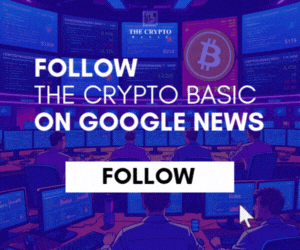An interview with Jed McCaleb, co-founder of both Ripple and Stellar, has resurfaced, reviving the argument around XRP and XLM.
The interview, originally aired by CNBC in March 2018, was recently shared by Stellar community member “Stellar Expert.” Alongside the clip, he asked several questions about Ripple’s practices and XRP’s structure.
McCaleb Reveals Why He Left Ripple
In the interview, McCaleb explained that he left Ripple to build a network with a different philosophy. He said he wanted to create something more open, more decentralized, and less tied to a single organization.
To him, this meant launching Stellar as a nonprofit and focusing on building a system that worked more like the internet: something anyone could use, without needing approval from a central authority.
He criticized Ripple for giving too much control to one company. In addition, he suggested that the way its validators worked made it hard for outside participants to get involved.
Building on this, Stellar Expert asked why Ripple continues to “dump on retail,” why the company can allegedly change network rules, why RippleNet relies on a group of validators linked to Ripple Labs, and what real role XRP plays for everyday users, given Ripple’s focus on banks and institutions.
To the $XRP Community, watch this video and genuinely answer me this:
1. Why has Ripple been dumping XRP on retail?
2. If Ripple can change the rules, isn’t that TradFi with blockchain branding and how is it different from SWIFT or PayPal?
3. Why is RippleNet run by a… pic.twitter.com/GZ6Z0gcwia
— Stellar Expert (@StellarExpert) July 15, 2025
Ripple’s Escrow Releases
Notably, the answer to his first question lies in the escrow system Ripple set up back in 2017. The company locked 55 billion XRP into monthly time-based contracts that release one billion tokens each month.
However, not all of it ends up in the market. Any unused tokens simply return to escrow, and Ripple publishes regular reports detailing these movements. The goal isn’t to flood the market but to support its payment infrastructure, especially for On-Demand Liquidity (ODL), which uses XRP to settle cross-border payments.
These sales mostly go to financial institutions and liquidity partners, not retail traders. Specifically, the firm designed the system for transparency and stability, not short-term profit. Ripple CTO David Schwartz has insisted that there’s nothing more they could do with their large XRP stash.
Does Ripple Have Unquestionable Control of the XRPL?
Meanwhile, the second question focuses on a common misunderstanding. Notably, Ripple doesn’t control how the XRP Ledger works. Any update or change to the network has to gain approval by at least 80% of the validators on the network, and that level of agreement must hold for two weeks before anything goes into effect.
Ripple itself only operates one validator out of more than 150 worldwide. So, while Ripple has influence due to its renown, it can’t force changes on the network without consensus from the broader community.
Also, the third question, about validator control, builds on the second. Ripple does publish a default list of trusted validators, called the Unique Node List (UNL), but that list is not fixed, and anyone can choose their own.
Moreover, validators on the network include universities, independent developers, exchanges, and other organizations, not just Ripple. This means no single group, including Ripple, can make decisions on its own.
XRP Still Has Utility Beyond Bank Use
Finally, regarding public use of XRP, the token plays a much larger role than just supporting RippleNet. While XRP’s design is more attractive to financial institutions and banks, the XRP Ledger is open-source, and anyone can build on it or use its features.
Developers have created a decentralized exchange that has been running since 2012, allowing people to trade assets with minimal fees. Other projects are using the network for NFTs, tokenized real estate, and even stablecoins like RLUSD.
Individuals can send money using XRP in seconds, with near-zero fees, and this is useful for remittances and micropayments. It is also available on major exchanges and wallet apps, meaning access to XRP isn’t limited to institutions.
DisClamier: This content is informational and should not be considered financial advice. The views expressed in this article may include the author's personal opinions and do not reflect The Crypto Basic opinion. Readers are encouraged to do thorough research before making any investment decisions. The Crypto Basic is not responsible for any financial losses.



